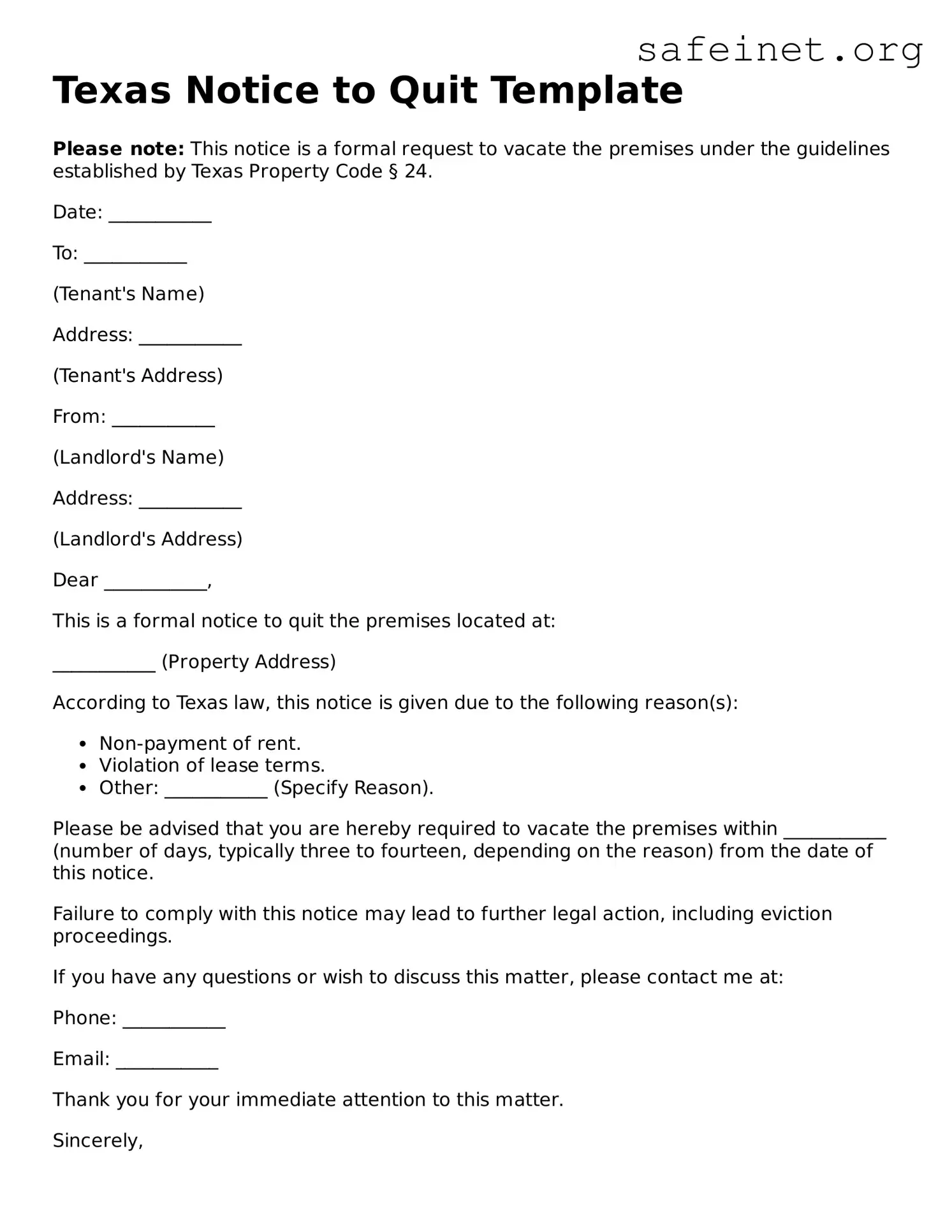What is the Texas Notice to Quit form?
The Texas Notice to Quit form is a legal document used by landlords to formally request that a tenant vacate the rental property. This notice is typically served when a tenant fails to pay rent or violates lease terms. It outlines the reason for eviction and specifies a deadline for the tenant to vacate the premises.
When should a landlord use a Notice to Quit?
A landlord should use a Notice to Quit when they wish to terminate a tenancy due to specific reasons such as non-payment of rent, lease violations, or when the lease term has expired. This notice serves as a preliminary step before initiating formal eviction proceedings in court.
How long does a tenant have to respond to a Notice to Quit?
In Texas, the time a tenant has to respond to a Notice to Quit can vary depending on the reason for the notice. Typically, a tenant is given 3 days to vacate the rental property if the notice is based on non-payment of rent. For other lease violations, the time frame may be specified in the lease agreement or local regulations.
Is the Notice to Quit form required to evict a tenant?
Yes, the Notice to Quit form is often a required step in the eviction process. While it may not be needed in every situation, it demonstrates that the landlord has given the tenant a fair opportunity to remedy the situation before seeking legal action. Failing to provide a proper notice can result in delays or complications during eviction proceedings.
Can a tenant contest a Notice to Quit?
Yes, a tenant can contest a Notice to Quit. If a tenant believes the notice is unjust or lacks merit, they have the right to respond and present their case in court if the eviction process continues. This may involve demonstrating that rent was paid, that the lease terms were not violated, or that other defenses apply.
Does the Notice to Quit need to be served in a specific way?
Yes, the Notice to Quit must be delivered according to Texas law. It can be served in person or sent via certified mail. Proper service is crucial as it ensures that the tenant receives the notice and allows for legal proceedings to proceed smoothly if necessary.
What happens if a tenant ignores the Notice to Quit?
If a tenant ignores the Notice to Quit and does not vacate the property by the specified deadline, the landlord can initiate eviction proceedings in court. This step typically involves filing a lawsuit for possession of the property, which can lead to a formal eviction judgment if the court finds in favor of the landlord.
Is there a specific format for the Texas Notice to Quit form?
While there is no mandated format for the Notice to Quit, it should clearly state the reasons for the eviction, the amount owed if applicable, the deadline for vacating the property, and the contact information of the landlord. Using a properly structured form helps ensure clarity and compliance with state laws.
